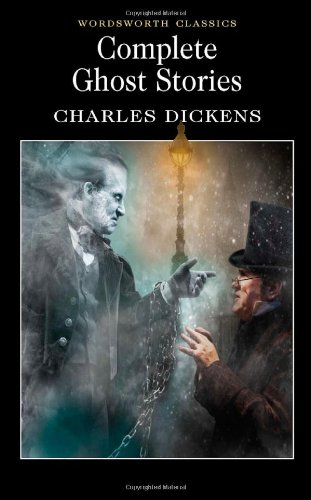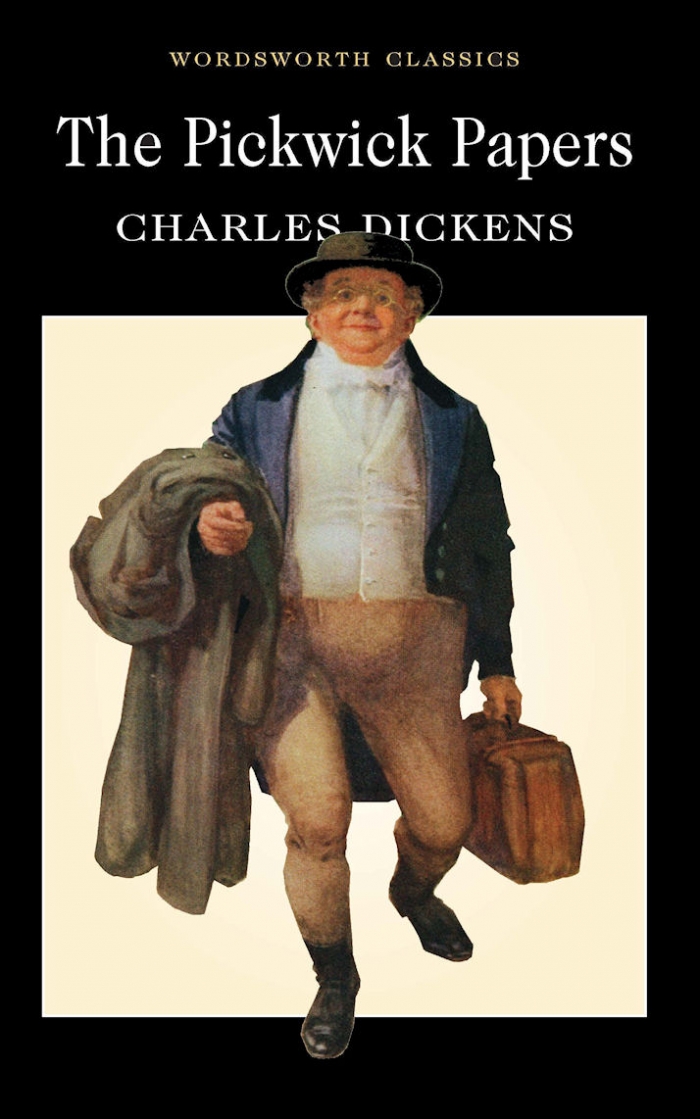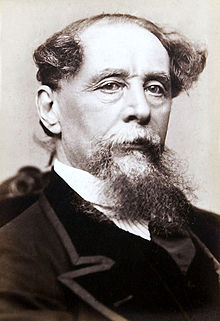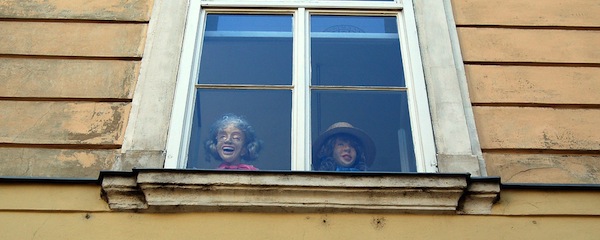
photo by Steve Gray
by Scott Wilson
For most, the name of Dickens evokes images of Victorian hardship. He is the man who, on his daily walk, observed the colourful patchwork of Victorian London, finding a place for the mudlarks, bankers and ‘fallen women’ in his stories. It is a connection so imbedded in cultural memory that any images of Victorian workhouses or debtors’ prisons are ‘Dickensian’ by the very qualities they possess.
Charles Dickens, undoubtedly, understood the capricious line that divided the rich and poor of London, because he had walked it himself. Whilst his family were detained in debtors’ prison, in 1824 Dickens worked at a factory sticking labels on pots of shoe polish. His early life was one of escaping the jaws of poverty and it is surprising he ever had the time to engage in journalism – a path which granted him the financial security to be a writer and eventually led him to being able to publish his own work.
The Charles Dickens that we largely remember is the novelist of instalments, who sympathised with the orphan’s plight and the poor man’s complaints. It is easy to  forget that for each of his workhouse novels or bildungsromans, he also produced short ghost stories, which, by his death in 1870, constituted a huge collection.
forget that for each of his workhouse novels or bildungsromans, he also produced short ghost stories, which, by his death in 1870, constituted a huge collection.
Dickens’ ability to write of the supernatural is known best through his redemptive story ‘A Christmas Carol’. Sour money-lender Ebenezer Scrooge is visited by his old business partner Jacob Marley on Christmas Eve and warned that, due to his miserliness at Christmas, he will be subjected to the visitations of three different spirits. Published in 1843, the adventure is one of his most popular tales to this day, yet much of the source material can be seen in an earlier short story from 1836, entitled the ‘The Goblins who Stole a Sexton’, which appeared in The Pickwick Papers. In the story, Gabriel Grub, a gravedigger who takes far too much pleasure in his work, is confronted by a horde of goblins after making a young boy cry on Christmas Eve. The goblins repeatedly kick Gabriel and show him images of hardship, the beauty of nature, and the joy of Christmas. The gravedigger eventually understands that his miserliness serves no one and he must change his ways. On Christmas Day, he is a redeemed man. The parallels with Ebenezer Scrooge are clear.
Dickens maintained a habit of releasing a ghost story at Christmas time, either as one of the parts of a larger novel, or as an isolated piece. I think it is fair to assume he greatly enjoyed writing them. According to Christine Baker, in her introduction to the Best Ghost Stories, Charles Dickens, walking amongst the taverns and dockyards of working-class London was not his only hobby; she writes that Dickens frequently attended séances and events that purported to establish a link with the spiritual world. Baker also comments that Dickens ‘kept a store’ of ghost stories ‘ready-written in case he needed to pad out an episode or meet a deadline’. He could supply any pushy editors with one of his supernatural tales instantly.
 It is therefore, perhaps, a little telling that his story ‘The Ghost in the Bride’s Chamber’ was published immediately after it was written, in 1857, rather than being saved with the many others he had in store.
It is therefore, perhaps, a little telling that his story ‘The Ghost in the Bride’s Chamber’ was published immediately after it was written, in 1857, rather than being saved with the many others he had in store.
At this time, Dickens was suffering from problems in his marriage to Catherine Hogarth, largely due to his recent infatuation with a young actress, Ellen Ternan. In 1858, Dickens divorced Hogarth in favour of Ternan and continued his writing career. ‘The Ghost in the Bride’s Chamber’ is notably different from his other ghost stories, as it lacks any kind of redemptive message, humour, or the circumlocutory sentences that we recognise to be typical of Dickens’ style.
In the story, an unnamed man, known only as ‘Him’, repeatedly suggests that a young girl – who is called Ellen – should die on the spot, until she eventually does so. Baker recognises that the story has more qualities of a menacing fairytale than it does of the Dickens stories contemporary culture has grown to love. In fact, it’s surprisingly un-Dickensian in its violence and brutality.
Ellen is described as being ‘a fair, flaxen-haired, large-eyed girl, who had no character, no purpose. A weak, credulous, incapable, helpless nothing’. This is a rare moment for Dickens, in which he does not let the actions of his character speak for themselves. We know Bill Sykes in Oliver Twist is cruel because of the disdain he shows to Nancy and Oliver. So too do we see Ebenezer Scrooge is misanthropic in his treatment of his clerk, Bob Cratchit. However, all we know of Ellen is what he has directly told us – that she is useless and is, in essence, ‘nothing’. This makes ‘The Ghost in the Bridal Chamber’ feel strange to read, in the context of his larger canon of redemptive messages and Christmas gargoyles.
Dickens’ next ghost story, ‘The Haunted House’, written in 1858, returns to a prose format far more like the writing we see in his other works. ‘The Haunted House’ begins with observations made by a man on a train, many of which are humorous, and all of which are insightful. These remarks often follow a slow thought process, but invariably offer a reward:
That opposite man had had, through the night – as that opposite man always has – several legs too many, and all of them too long.
Dickens’ pleasure of writing supernatural short stories never faded. In 1862, he became a member of The Ghost Club, one of the first established agencies that attempted to identify and record supernatural events across London and nearby  boroughs. Four years later, he wrote his greatest short ghost story, ‘The Signalman’, in which a ghost haunts the eponymous employee and visits horrific disasters upon the railway line. The final haunting is a premonition of the signalman’s own demise, and is perhaps a fitting way to enter the final years of Dickens’ life.
boroughs. Four years later, he wrote his greatest short ghost story, ‘The Signalman’, in which a ghost haunts the eponymous employee and visits horrific disasters upon the railway line. The final haunting is a premonition of the signalman’s own demise, and is perhaps a fitting way to enter the final years of Dickens’ life.
In 1867, his health began to fail and he soon refused to do any of his public readings due to his inability to sustain performance. With his health ailing, Dickens retreated from the public eye and began working on the unfinished Edwin Drood. On 8th June, 1870, he suffered a stroke and died the next day.
Dickens will always be remembered for his bildungsromans and his insight into the trauma and trials of the Victorian underclass in England. Yet he was not a writer confined to only one sphere. His appreciation of ghost stories, and the short story form, was ahead of his time and many of his ghost stories offer characters who are just as compelling as those found in his more famous novels.
~
 Scott Wilson is from the South-West of England but spent some years of his childhood in Aboriginal communities in Australia. He studied English Literature at Royal Holloway, University of London, and is now a reader for the White Review. His favourite short story writers are Haruki Murakami and James Joyce.
Scott Wilson is from the South-West of England but spent some years of his childhood in Aboriginal communities in Australia. He studied English Literature at Royal Holloway, University of London, and is now a reader for the White Review. His favourite short story writers are Haruki Murakami and James Joyce.

